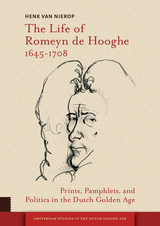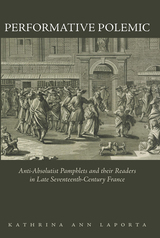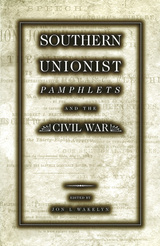


This is the first volume of a four-volume set that will reprint in their entirety the texts of 72 pamphlets relating to the Anglo-American controversy that were published in America in the years 1750–1776. They have been selected from the corpus of the pamphlet literature on the basis of their importance in the growth of American political and social ideas, their role in the debate with England over constitutional rights, and their literary merit. All of the best known pamphlets of the period, such as James Otis’s Rights of the British Colonies (1764), John Dickinson’s Farmer’s Letters (1768), and Thomas Paine’s Common Sense (1776) are to be included. In addition there are lesser known ones particularly important in the development of American constitutional thought: Stephen Johnson’s Some Important Observations (1766), John Joachim Zubly’s An Humble Enquiry (1769), Ebenezer Baldwin’s An Appendix Stating the Heavy Grievances (1774), and Four Letters on Interesting Subjects (1776). There are also pamphlets illustrative of the sheer vituperation of the Revolutionary polemics, and others selected for their more elevated literary merit. Both sides of the Anglo-American dispute and all genres of expression—poetry, dramatic dialogues, sermons, treatises, documentary collections, political “position papers”—that appeared in this form are included.
Each pamphlet is introduced by an essay written by the editor containing a biographical sketch of the author of the document, an analysis of the circumstances that led to the writing of it, and an interpretation of its contents. The texts are edited for the convenience of the modern reader according to a scheme that preserves scrupulously the integrity of every word written but that frees the text from the encumbrances of eighteenth-century printing practices. All references to writings, people, and events that are not obvious to the informed modern reader are identified in the editorial apparatus and where necessary explained in detailed notes.
This first volume of the set contains the texts of 14 pamphlets through the year 1765. It presents, in addition, a book-length General Introduction by Bernard Bailyn on the ideology of the American Revolution. In the seven chapters of this essay the ideological origins and development of the Revolutionary movement are analyzed in the light of the study of the pamphlet literature that went into the preparation of these volumes. Bailyn explains that close analysis of this literature allows one to penetrate deeply into the colonists’ understanding of the events of their time; to grasp more clearly than is otherwise possible the sources of their ideas and their motives in rebelling; and, above all, to see the subtle, fundamental transformation of eighteenth-century constitutional thought that took place during these years of controversy and that became basic doctrine in America thereafter.
Bailyn stresses particularly the importance in the development of American thought of the writings of a group of early eighteenth-century English radicals and opposition politicians who transmitted to the colonists most directly the seventeenth-century tradition of anti-authoritarianism born in the upheaval of the English Civil War. In the context of this seventeenth- and early eighteenth-century tradition one sees the political importance in the Revolutionary movement of concepts the twentieth century has generally dismissed as mere propaganda and rhetoric: “slavery,” “conspiracy,” “corruption.” It was the meaning these concepts imparted to the events of the time, Bailyn suggests, as well as the famous Lockean notions of natural rights and social and governmental compacts, that accounts for the origins and the basic characteristics of the American Revolution.


During the Civil War, many southerners expressed serious opposition to secession and openly entreated their fellow southerners to maintain support for the Union. A number of these unionists actively opposed the Confederacy while remaining within its borders; others fled their homes and the South, becoming exiles in northern cities and the border slave states. The southern unionist leaders used their oral and written communication skills to proclaim their opposition to the Confederacy, often producing pamphlets that circulated in the North, in the border states, and in the heart of the Confederacy itself. Jon L. Wakelyn unites the voices of these southern unionists in the first comprehensive collection of their written arguments—Southern Unionist Pamphlets and the Civil War.
Including eighteen pamphlets and a discussion of twenty-two others, this book provides a magnificent representation of the southern unionists and their concerns. Written between 1861 and 1865, the pamphlets were compiled by local and national political leaders, including three federal congressmen and future vice president and president Andrew Johnson, as well as concerned private citizens and members of the military and clergy. Except for Florida, South Carolina, and Georgia, all Confederate and border slave states are represented in this collection.
The topics discussed and the events described in the pamphlets cover a wide range of subjects. The authors discuss their motivation to remain loyal to the union, the actions of their friends and enemies, the perilous life of unionists behind military lines, their continued support for the federal government, and their hopes for a restored Union. Aware that their northern allies would read these pamphlets, the unionists also wrote to solicit northern aid, to renew efforts to defeat the Confederacy, and to gain sympathy for the plight of their people behind enemy lines.
A remarkable collection of primary source material, Southern Unionist Pamphlets and the Civil War provides the most detailed study of the internal resistance to the Confederacy available to date. Students, scholars, and general readers alike will find this volume an invaluable resource for Civil War studies.
READERS
Browse our collection.
PUBLISHERS
See BiblioVault's publisher services.
STUDENT SERVICES
Files for college accessibility offices.
UChicago Accessibility Resources
home | accessibility | search | about | contact us
BiblioVault ® 2001 - 2024
The University of Chicago Press









